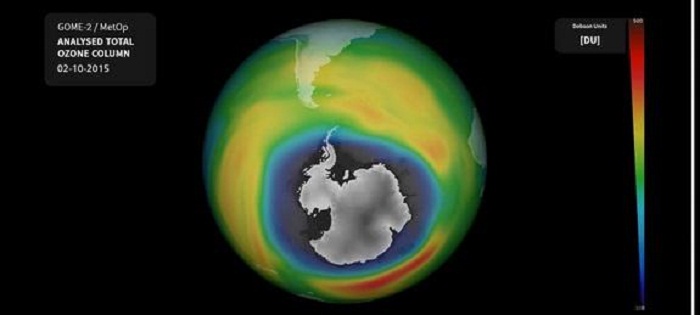Losing part of the ozone layer over Antarctica is an annual phenomenon, but for the past nine years, the ozone hole has been consistently smaller than the record-breaking 27 -million-square-km (10.4 million square miles) ozone hole measured in 2006, according to annual records from NASA`s Goddard Space Flight Center. Scientists thought the apparent stabilization indicated that the ozone layer was recovering very gradually. But this year`s ozone hole surprised them because it formed a whole month later in the year than the ozone hole typically forms, and its size is almost record-breaking. [Top 10 Ways to Destroy Earth]
"In August 2015, we observed an unusually strong southern flow, which directs warm and ozone-rich air masses from lower latitudes over Antarctica," Michael Bittner, one of the researchers responsible for the World Data Center for Remote Sensing of the Atmosphere at the German Aerospace Center, said in a statement. "The typical polar vortex, which provides isolation for Antarctica, could not develop well under these conditions."
The ozone layer occurs at an altitude between 10 and 50 km (6 and 31 miles) above the Earth`s surface, in the stratosphere, according to researchers at the German Aerospace Center. During the Southern Hemisphere`s winter, the concentration of chlorofluorocarbons — nontoxic, nonflammable chemicals containing carbon, chlorine and fluorine that used to be used in products such as hair spray and refrigerators — increases due to lower temperatures, according to the U.S. Environmental Protection Agency (EPA).
When spring comes to the Southern Hemisphere, the additional sunlight causes chlorofluorocarbons to create an ozone-depleting effect, the EPA website explained. The ozone hole reaches its annual maximum expansion during the spring months in the Southern Hemisphere and then reduces in size again during the local late spring.
The ozone layer protects life on Earth from the sun`s harmful ultraviolet rays, according to NASA`s Earth Observatory. Overexposure to ultraviolet rays increases the risk of skin cancer and cataracts in humans, and this type of radiation has also been known to cause blindness in animals, according to the Climate Science Coalition.
NASA recently announced that the ozone hole would heal itself and be half-closed by 2020, but these newest observations seem to support predictions made by chemistry-climate models and that the hole won`t begin to disappear until 2040 or later according to the World Meteorological Organization Global Research and Monitoring Project`s 2014 report.
More about:
















































